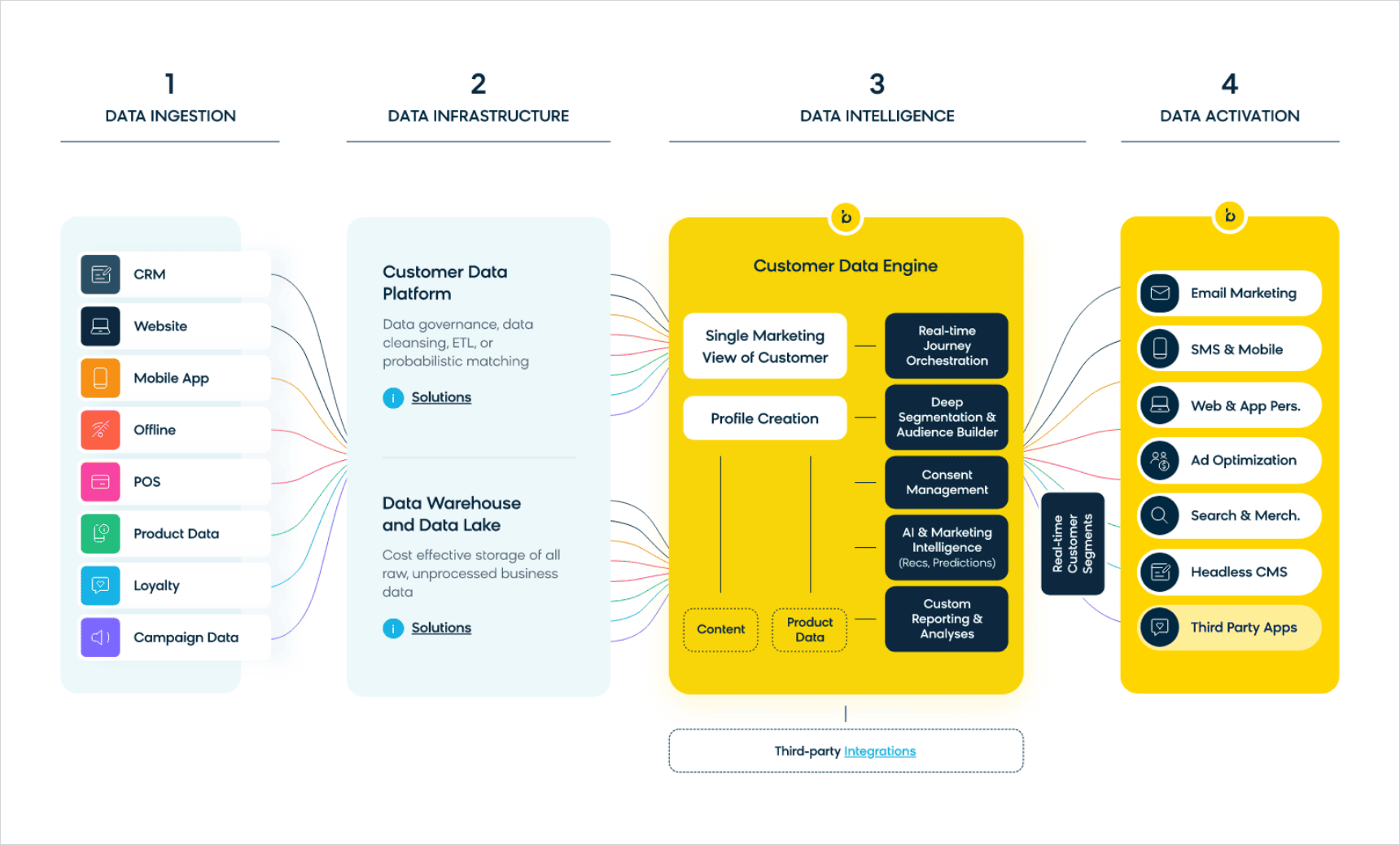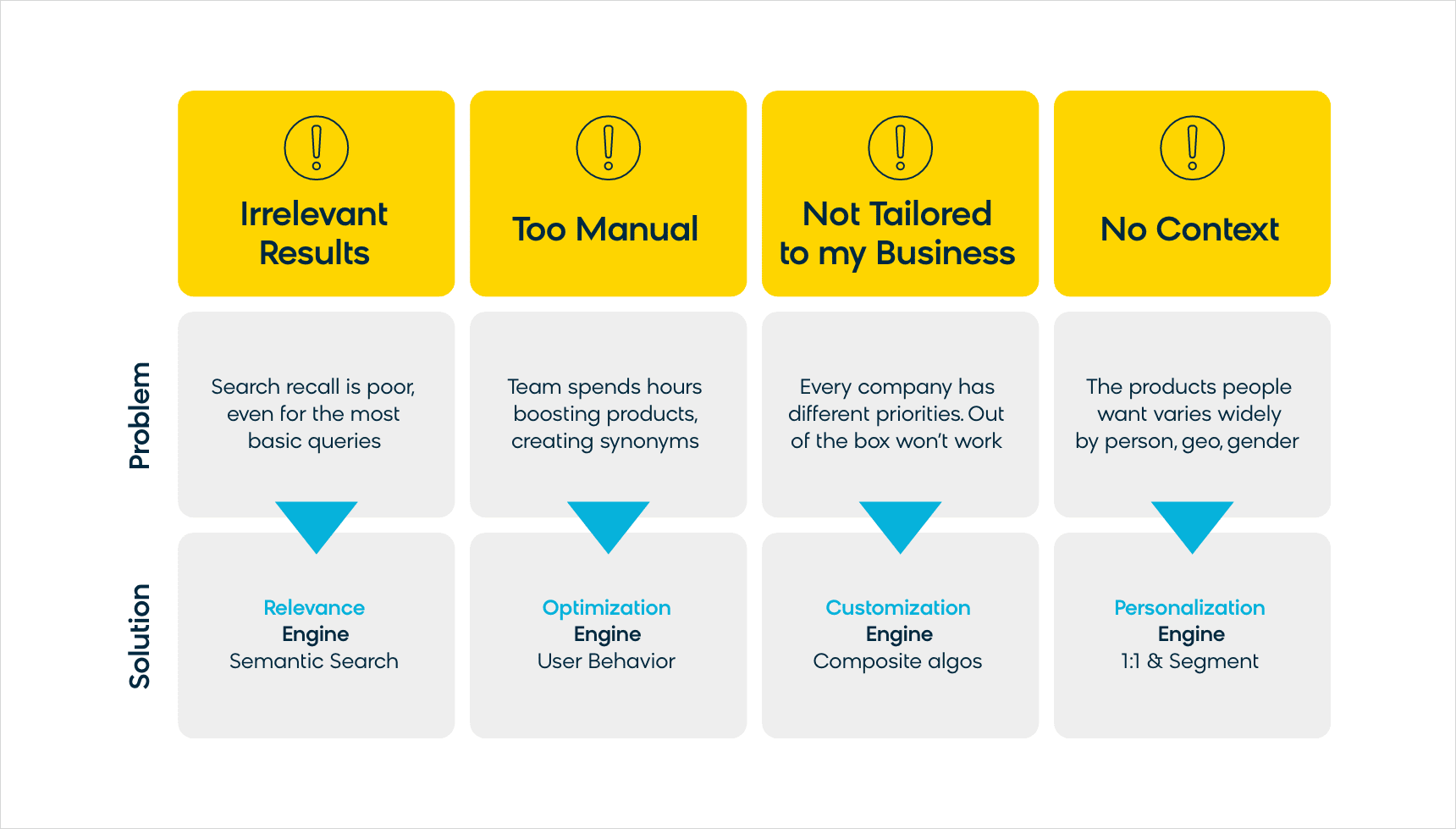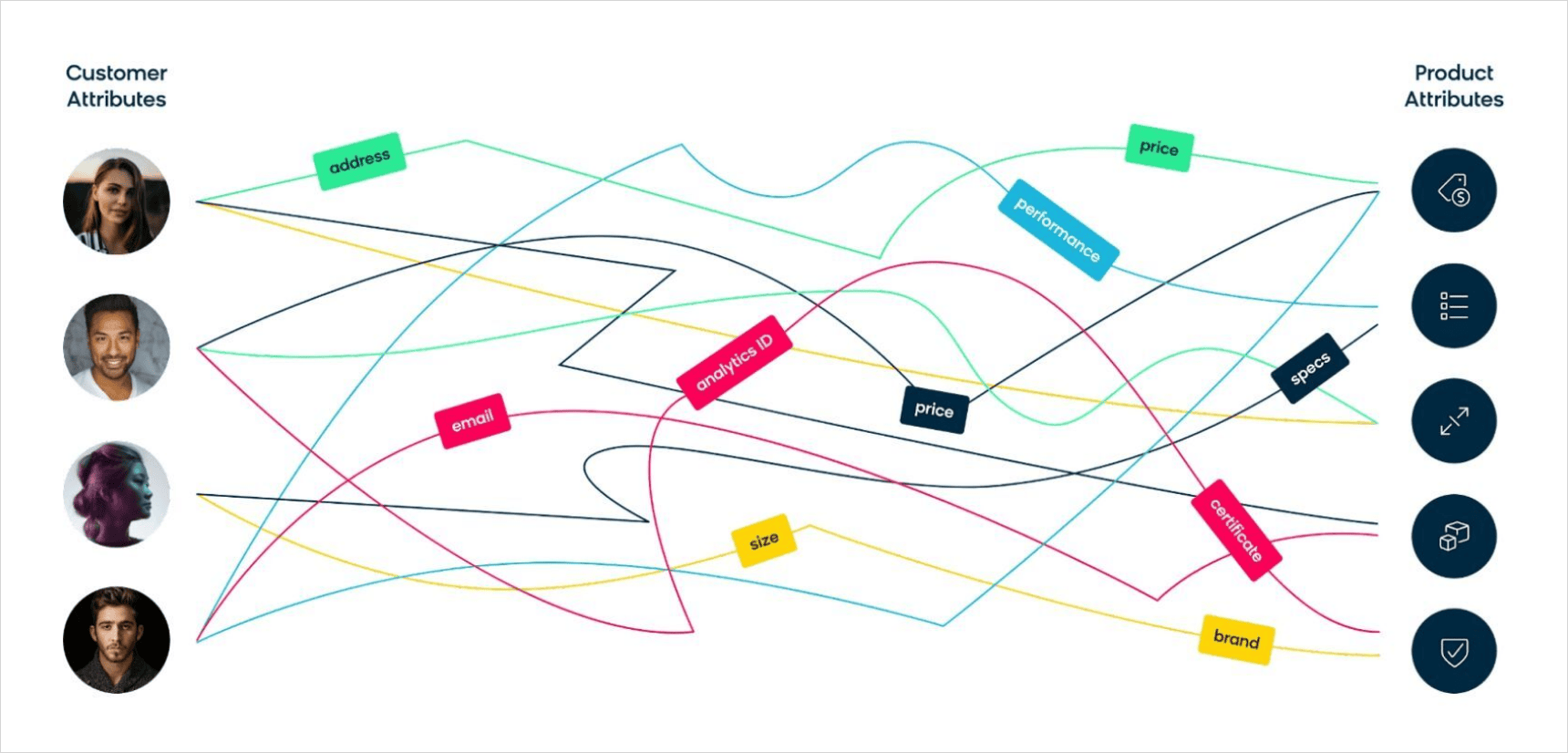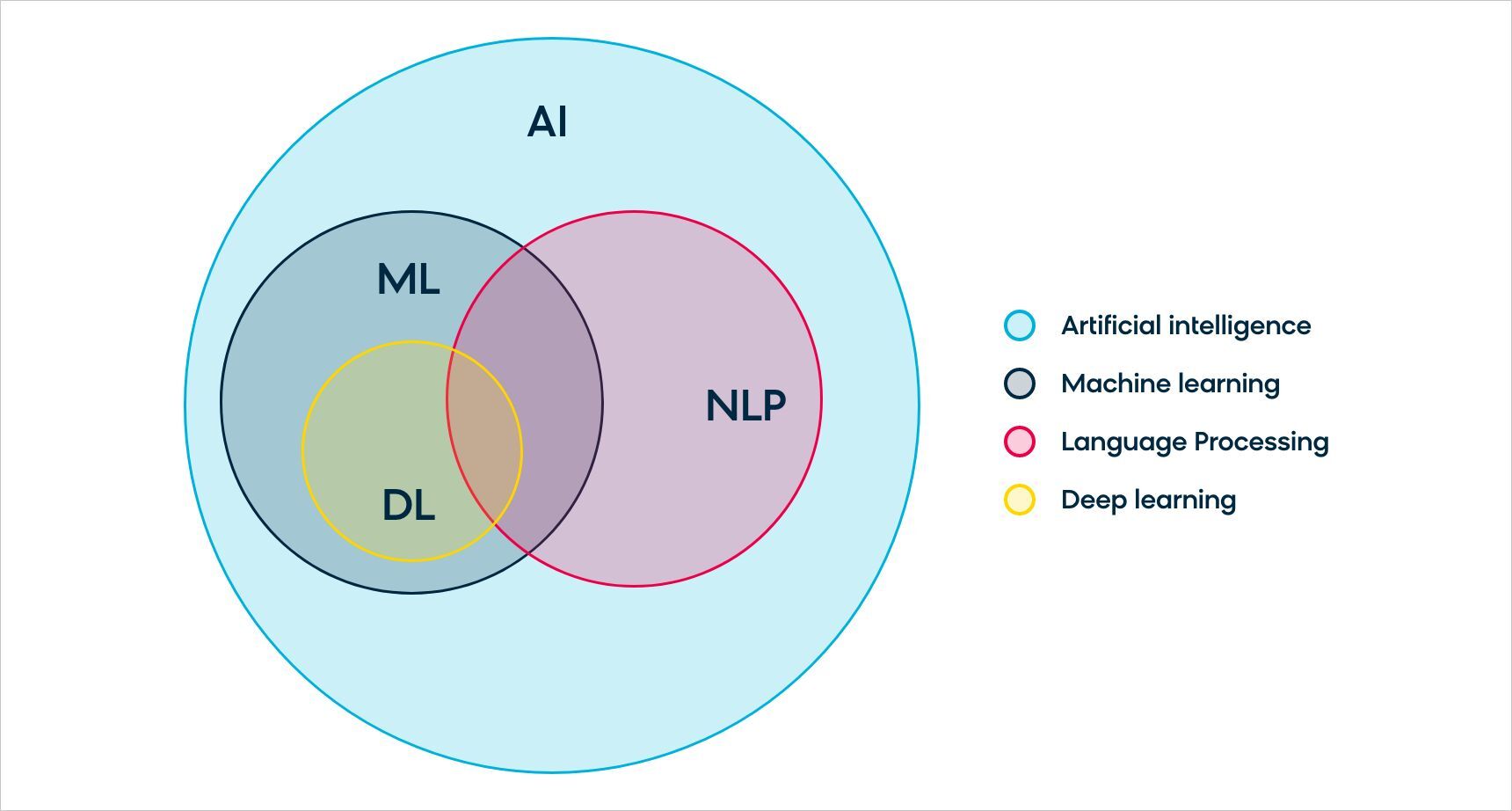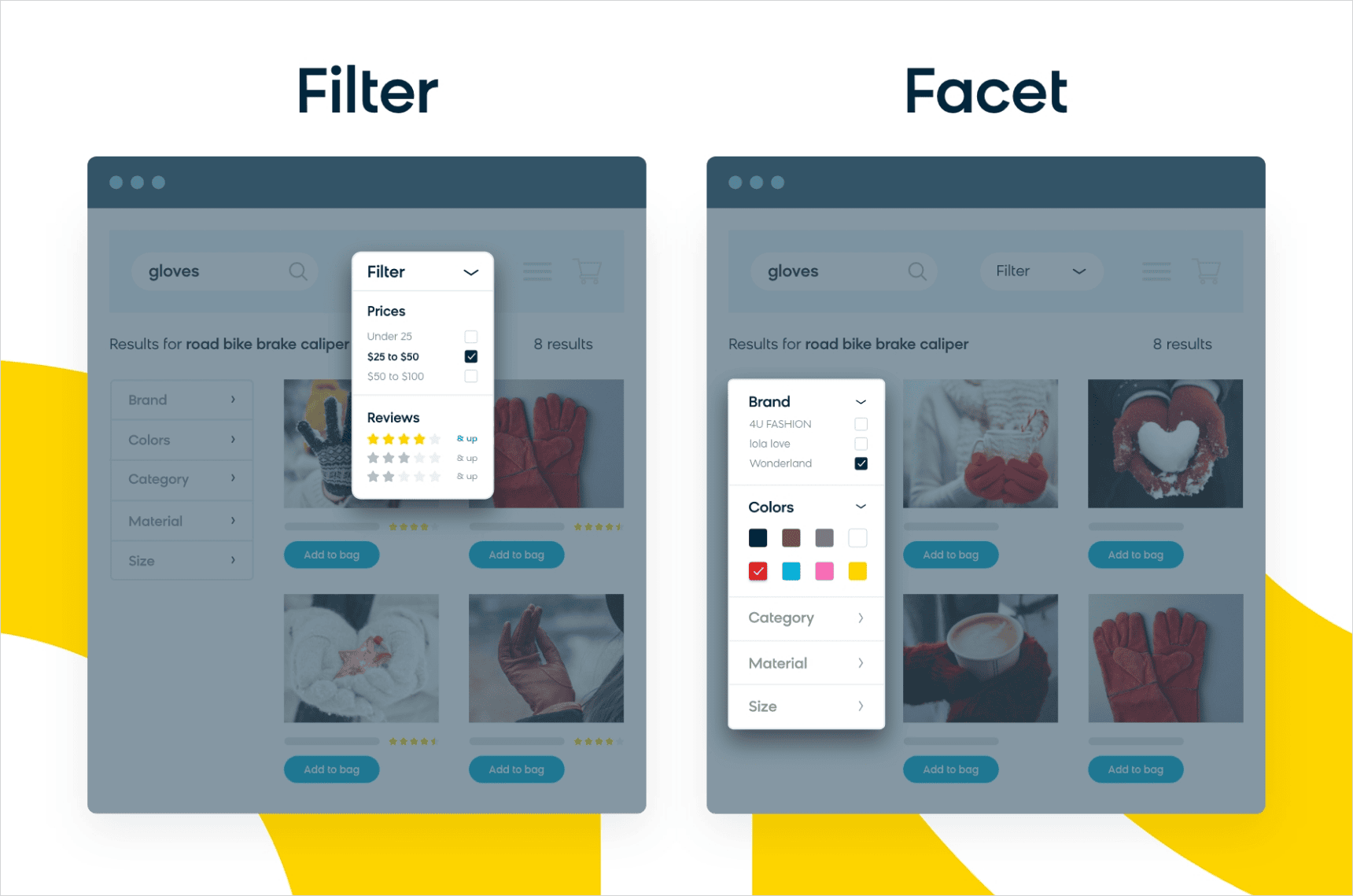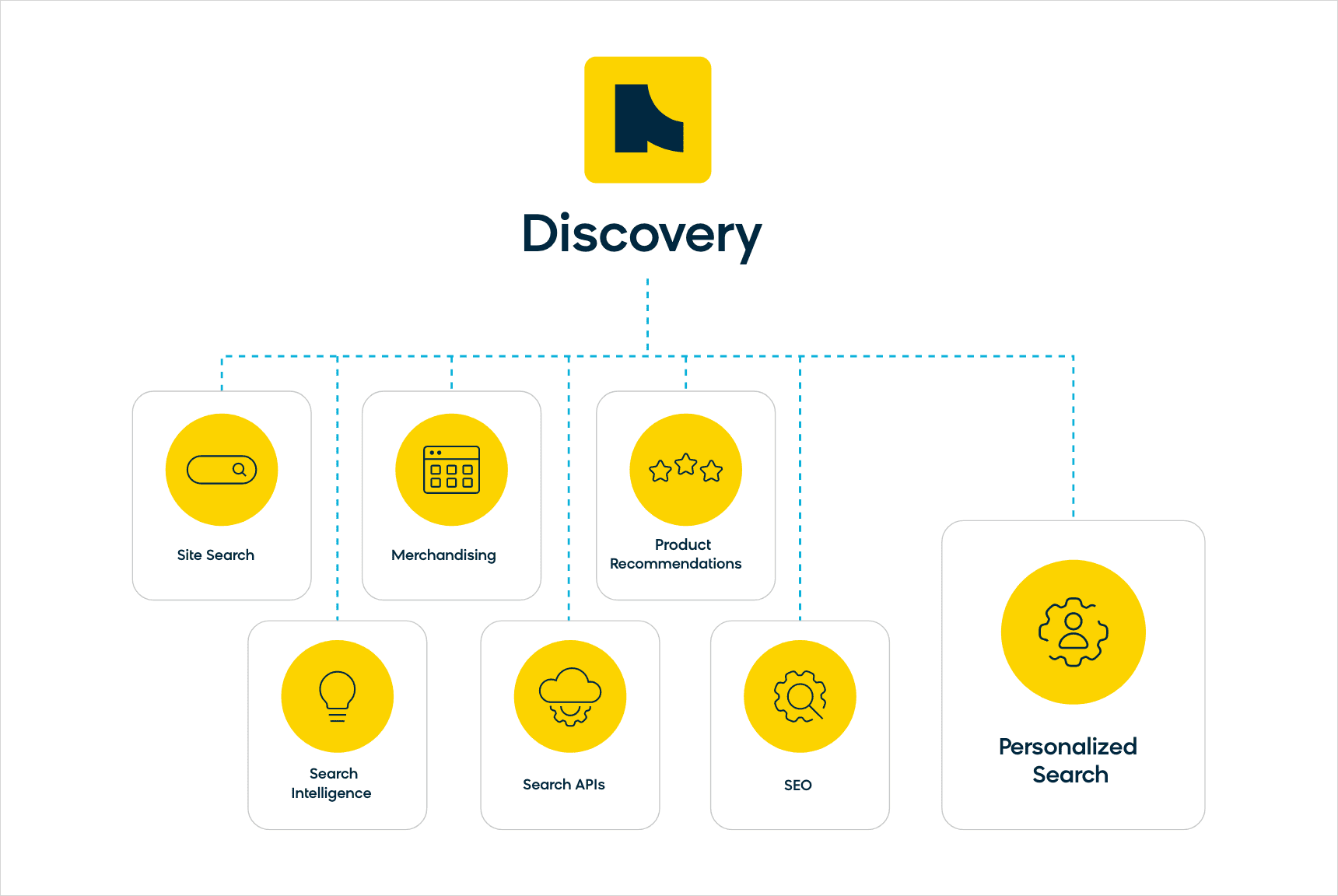Most of us have regularly discussed personalization with a friend, family member, or colleague. Maybe you were a bit creeped out by how “on point” your TikTok algorithm has been lately, or perhaps you were targeted for an ad with a specific item you don’t even remember discussing out loud. These examples are just two of the many instances where we experience personalization online.
Personalization can also happen through site search and guided navigation. Just think about your past experiences with Google search, which bases results on your location, search history, or preferences. The same is true of ecommerce product search. So, if you have two different prospects searching for a “coat” in different geographies, the search bar will consider that a coat in Minnesota is very different from one in California. Of course, the possibilities aren’t limited to geography — this is only one of the many ways site search is personalized.
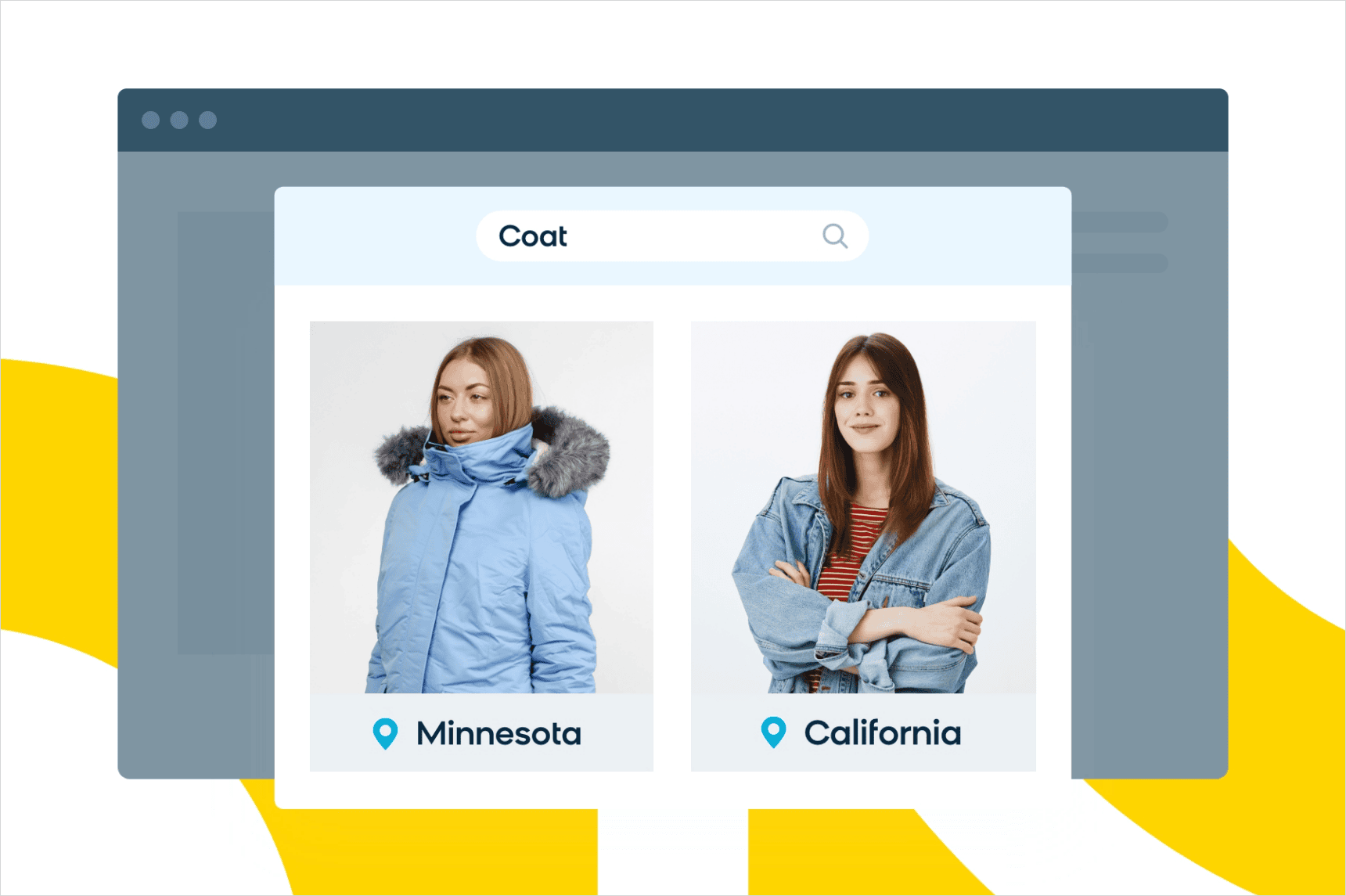
Search personalization occurs in many different ways: a B2B distributor can display relevant search results for a query on “gloves” based on particular job segments; a travel brand can make destination recommendations tailored towards specific interests or locations; or a retailer can rank more affordable products higher in search results for certain shoppers based on their purchase history.
Whichever way personalization happens, 78% of consumers chose, recommended, or paid more for a brand that provided a personalized shopping experience. Our research with CommerceNext shows that ecommerce practitioners are on the same page as their customers. 61% of respondents believed that on-site personalization is the key to driving business growth, with site search and guided navigation close behind at 57%. To create meaningful and relevant experiences, online merchandisers can use personalization capabilities within their search and merchandising tool to attract, delight, and retain customers.
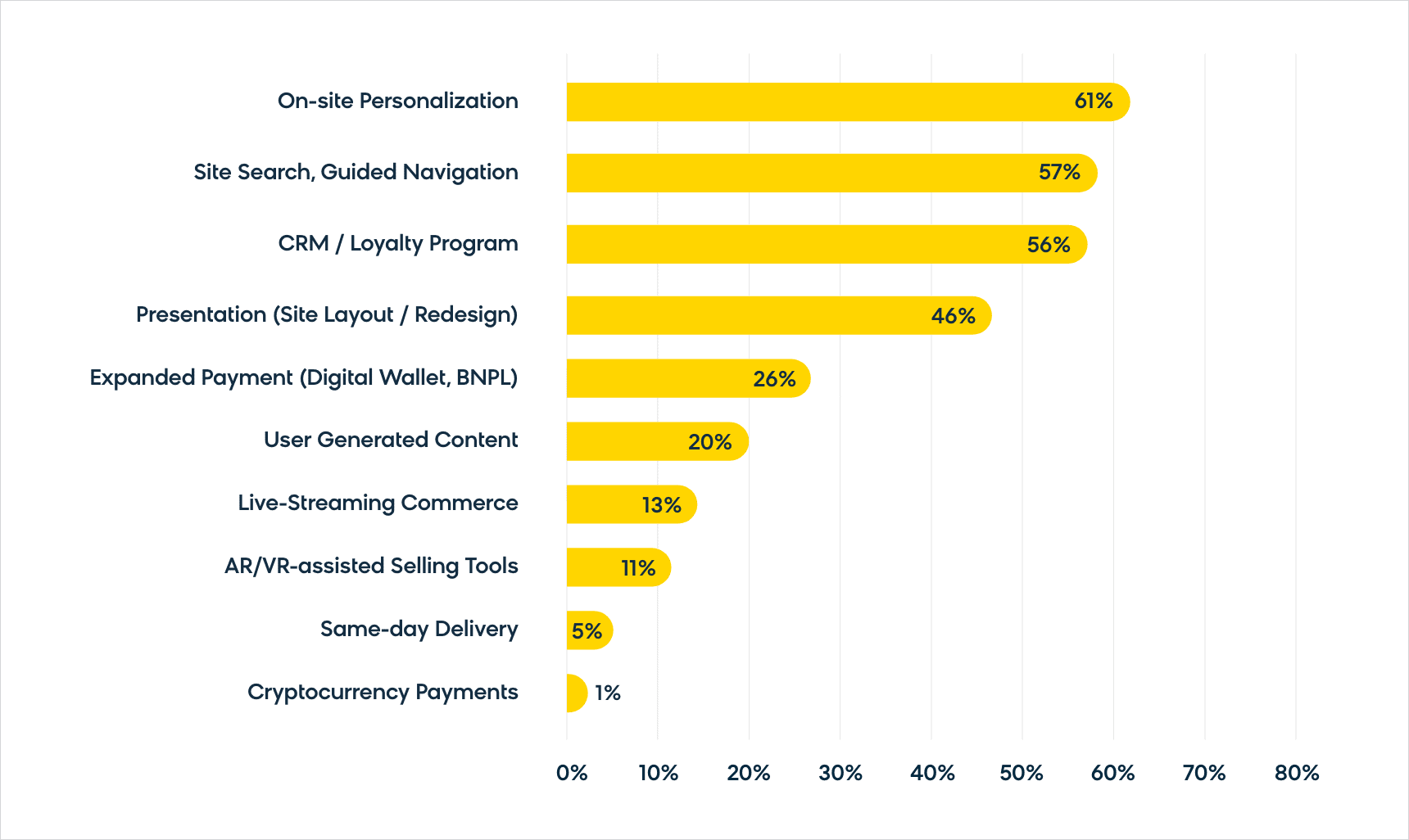
All in all, personalized site search best practices are essential for businesses looking to improve their customer experience and drive revenue growth. But before jumping into the best practices, let’s first cover some basics.
What Is Personalized Search?
Personalized search is as it sounds — search results are tailored towards users (or shoppers and buyers if we’re thinking in the context of ecommerce) based on their location, preferences, behavior, and history from different channels. The Google search engine first introduced the concept around 2004, hoping to elevate the user experience and become the globe’s preferred search engine. The company now uses everything from bookmarks to search history to calculate personalized results for individual users and rank web pages accordingly.
Certain ecommerce search engines have moved toward the same personalization promise to accommodate shoppers’ preferences. Yet, some are further along in development than others. Various solutions on the market are limited in that they use a pixel to build out personalization, which takes time to collect data for a particular user.
However, Bloomreach has built a solid foundation of customer data over the past 14+ years with our customer data engine (CDE). If you’re just getting started with a product discovery initiative, our CDE will provide a single customer view that enables real-time segmentation along with comprehensive customer analytics and reporting, allowing your team to quickly gain insight into who your customers are to serve them the results they want — without waiting on a pixel to learn the ins and outs of your business.
How Does Personalized Search Work?
Every vendor’s approach to search personalization is different. At Bloomreach, we’ve understood the challenges of search from the get-go:
- Irrelevant results. Search recall, the set of products that are returned for a query, seems to be poor even for the most basic queries (e.g., a search for “milk chocolate” returns chocolate milk and all sorts of milk products).
- Too manual. Your team spends hours boosting products, creating synonyms, and trying to fix the search experience. For instance, if a floral dress is out of stock in all except the XXS category, but it’s still ranking high in the results, your team has to identify it and go manually bury it.
- Not tailored to your business. Every single company has dramatically different requirements and business objectives. Therefore, your brand might have a company-wide mandate to push high-margin or private-label products, but your current search engine isn’t customizable.
- No context. Last but certainly not least, search intent varies widely by who is searching and where they are searching from. Let’s go back to that “coat” example. If your search engine locates coats but ranks them similarly for shoppers in both Minnesota and California (who require different types of coats), then your search bar isn’t doing its job correctly.
Search personalization addresses the final search issue we mentioned of “no context.” And while merchandisers want to personalize the product discovery experience, they struggle to do it in real time and at scale. Bloomreach Discovery uses what we call “real-time customer segments” to personalize product search, category, and recommendation results in real time based on customer demographics and behavioral data. This helps the same ecommerce practitioners better define and utilize the product grids across their brand’s website — even for first-time visitors — to drive revenue per visitor.
Bloomreach will help your company identify the proper segmentations, or groups of customers, based on their shared attributes (e.g., mountain biker vs. road biker or plumber vs. electrician), and target them effectively. By exposing this segmentation data, our Discovery product proceeds to a 30-day training where algorithms build personalized rankings for each segment. Once the data is complete, you can A/B test the segmentations to evaluate the performance.
Why Is Personalized Search So Important to Ecommerce?
Personalized search is critical to succeed in a competitive shopping environment where customers have high expectations. It’s a big step for ecommerce sites to personalize search results since you’ll ultimately be catering to potential customers, helping them find the products and services with ease, and improving the likelihood of conversions. Not to mention, satisfied customers will be more likely to shop with your brand again and can become your biggest advocates. Plus, search personalization provides a big opportunity to differentiate from your competitors.
Since personalized search algorithms help ecommerce businesses get a deeper understanding of their customer base, brands can gain insights into shoppers’ needs and preferences to improve the purchase journey, tailor promotions and sales, and ultimately drive revenue growth. By analyzing customers’ data, including historical purchases and past searches, your business has a significant opportunity to reduce bounce rates, grow its customer base, and take its operations to the next level.
The Best Practices for Leveraging Personalized Search
Now that you know more about personalized search, here are five best practices to leverage it, which can all be done by Bloomreach Discovery.
Make Sure Your Commerce Data Is Clean and Complete
It’s crucial for product and customer data (or “commerce data”) to be clean and complete for personalized search to do its magic. Since personalized search relies heavily on data to identify patterns and serve the right results, it should be no surprise that incomplete or inaccurate data can lead to unsuccessful attempts at personalization.
For example, if a frequent site visitor of your retail e-shop has increased their income and has begun to express an interest in your luxury products, then you no longer want to serve up the same affordable items you once did. Not only will it no longer reflect their true interests and preferences, but it’s a disservice to your business, which should be optimizing the search experience toward real-time intent to increase revenue growth and bolster customer loyalty. As we discussed earlier, Bloomreach’s CDE can help connect customer data to product data for successful personalization and elevated customer experiences.
Create Customer Segments for Your Business
While this best practice might seem easier said than done, it’s vital to your personalized search strategy. Unlike any other product discovery solution on the market, Bloomreach champions multi-layered personalization where every customer across every industry and market is considered. Therefore, it doesn’t matter if you’re just getting started in ecommerce or have been invested in it for years.
First, Bloomreach’s multi-layer personalization approach builds customer segments automatically based on our real-time learnings. If you already have a customer data platform, then our technical experts can assist you with incorporating it into our solution. Second, Bloomreach doesn’t only construct segments based on real-time learnings or 1:1 behavior of frequent site visitors — but we also refer to the massive dataset we’ve built up over the last decade. This means, your brand doesn’t have to wait for a pixel to get to learn your customers. With all these past and present learnings, Bloomreach can personalize as customers browse your site, using product recommendations based on artificial intelligence or merchandiser-set rules.
Be Okay With Leveraging AI To Understand and Automate
AI is essential for ecommerce businesses looking to offer superior customer experiences — the ones they’ve come to expect — in site search and beyond. AI, and specifically natural language processing, can analyze user behavior and search queries to optimize search functions based on the products shoppers are searching for, most interested in, and most likely to purchase. With Bloomreach, this happens instantaneously, allowing your customers to see the products or services most relevant to them at the moment. This level of personalization can result in increased user engagement, retention, and ultimately, more revenue.
AI also helps businesses understand their customers intimately at scale. With an increase in the number of products and site visitors, it can be challenging for your team of practitioners to maintain accurate, personalized search results manually. AI-powered site search can automate many of these processes with machine learning, enabling businesses to handle scaling without compromising on digital experience. Simply put, using AI in site search is crucial to your success (and survival) as ecommerce continues to evolve.
Add Another Layer to Search With Filters and Facets
The search experience doesn’t have to be limited to the search bar, either. Using filters and facets is another effective way to optimize your site’s search experience for your customers. Although they have the same purpose, filters and facets have their differences. Filters are broader, unchanging categories — such as prices or reviews — while facets are more specific to the results of a particular search query. Think of them as categorizations for the product itself, like brands, colors, or model years.
Both filters and facets help customers reduce the number of items on the page to find exactly what they’re looking for. However, the major challenge — with facets, in particular — is that they have to be relevant to the results set to encourage conversion. Luckily, Bloomreach’s algorithms can optimize facet ranking based on engagement metrics. Or, your team can take control with our facet editor, ranking facet values by relevance, tally count, or alphanumeric order. Ecommerce businesses can use data analysis to identify the most commonly used filters and facets and make them more prominent in user navigation. With them, your business has the tools to better understand customers’ preferences and improve the shopping experience.
Don’t Be Afraid To Test, Test…and Test Some More
A/B testing is crucial for any ecommerce business that is looking to provide personalized search experiences that yield great results at scale. By committing to A/B testing, you’re helping your business deliver the best search results possible. The insights gained through these tests can be used to improve the overall search experience and boost revenue and customer loyalty.
Furthermore, testing can help you better understand your customers’ preferences and provide more autosuggestions, product recommendations, and facets tailored to each user’s specific needs. Using A/B tests to optimize your personalized search experience is a simple yet effective way of ensuring that you’re providing customers with a positive shopping experience that will encourage them to come back time and again.
Personalized Search Is More Impactful With Bloomreach Discovery
When it comes to ecommerce, every business’s main objective is to cater to its customers’ needs effectively. And with Bloomreach Discovery’s personalized search capabilities, that goal can now become more accessible than ever. Leveraging our personalization engine can lift typical manual constraints in your workflow and lead to improved conversion rates, increased revenue, and higher customer satisfaction. What better way is there to show your customers that you care than by understanding their unique needs, interests, and preferences?
Don’t overlook the power of AI in personalized search, whether you’ve just invested in Bloomreach’s personalized search module or are seriously considering it. Want more information on best practices? Check out our Discovery Foundations course through Bloomreach Academy.


